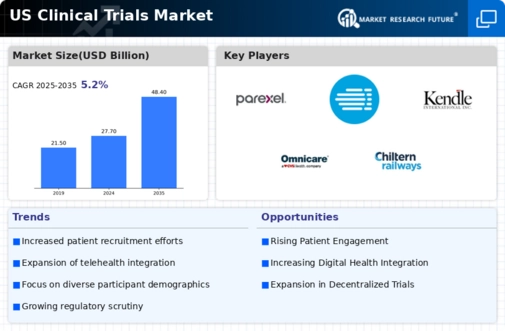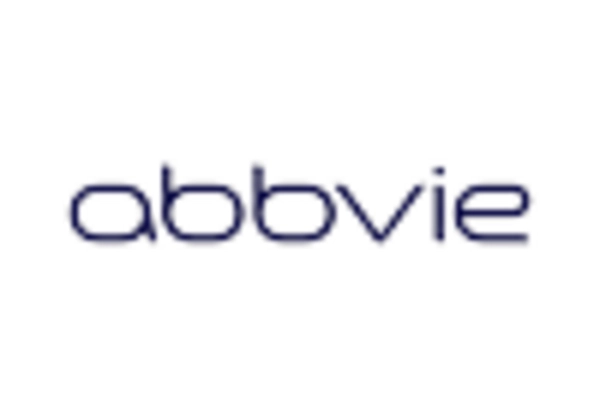Advancements in Biopharmaceuticals
The clinical trials market is significantly influenced by advancements in biopharmaceuticals, which are becoming a cornerstone of modern medicine. The rise of biologics and biosimilars has led to an increased number of clinical trials focused on these products. In 2025, it is estimated that biopharmaceuticals will account for over 50% of all new drug approvals, necessitating a robust clinical trials market to support their development. This shift towards biologics is not only transforming treatment paradigms but also driving investment in clinical research, as companies seek to validate the efficacy and safety of these innovative therapies.
Integration of Artificial Intelligence
The integration of artificial intelligence (AI) into the clinical trials market is reshaping how studies are designed and conducted. AI technologies are being utilized to streamline patient recruitment, optimize trial protocols, and analyze data more efficiently. This technological advancement is expected to reduce trial timelines by up to 30%, thereby accelerating the development of new therapies. As AI continues to evolve, its application in the clinical trials market is likely to enhance operational efficiencies and improve patient outcomes, making it a critical driver of growth in the industry.
Rising Demand for Innovative Therapies
The clinical trials market is experiencing a notable surge in demand for innovative therapies, particularly in areas such as oncology, neurology, and rare diseases. This trend is driven by the increasing prevalence of chronic diseases and the need for novel treatment options. According to recent data, the market for oncology drugs alone is projected to reach approximately $200 billion by 2025, highlighting the urgency for clinical trials to evaluate these therapies. As pharmaceutical companies invest heavily in research and development, the clinical trials market is likely to expand, accommodating a growing number of studies aimed at bringing groundbreaking therapies to market.
Increased Focus on Personalized Medicine
The clinical trials market is witnessing a shift towards personalized medicine, which tailors treatments based on individual patient characteristics. This approach is gaining traction due to its potential to improve treatment efficacy and minimize adverse effects. As a result, clinical trials are increasingly designed to evaluate therapies in specific patient populations, leading to more targeted and effective interventions. The market for personalized medicine is projected to reach $2 trillion by 2025, indicating a substantial opportunity for clinical trials to validate these tailored therapies and contribute to the evolution of healthcare.
Regulatory Support for Accelerated Approvals
Regulatory bodies are providing increased support for accelerated approvals of new therapies, which is significantly impacting the clinical trials market. Initiatives aimed at expediting the review process for breakthrough therapies are encouraging pharmaceutical companies to invest in clinical research. In 2025, it is anticipated that the number of accelerated approvals will rise by 25%, reflecting a growing recognition of the need for timely access to innovative treatments. This regulatory environment fosters a more dynamic clinical trials market, as companies seek to navigate the approval landscape efficiently.

















Leave a Comment